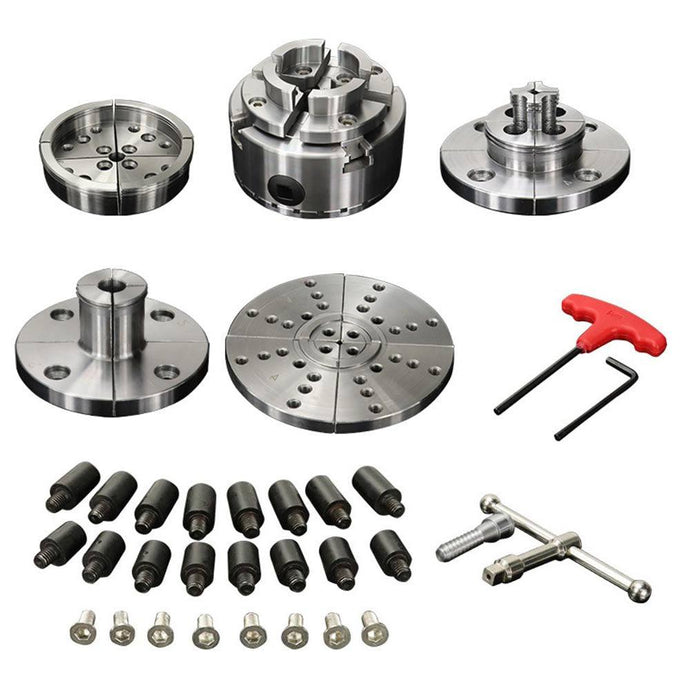When it comes to woodturning and metalworking, chucks play a vital role in securely holding workpieces on a lathe. Two commonly used chuck types are the 3-jaw chuck and the 4-jaw chuck. While both serve the same purpose of gripping and centering workpieces, there are distinct differences between them. In this essay, we will explore the dissimilarities between a 3-jaw chuck and a 4-jaw chuck.
A 3-jaw chuck, as the name suggests, has three jaws that are evenly spaced around the chuck body. These jaws move in unison and are typically adjusted using a key or lever mechanism. The main advantage of a 3-jaw chuck is its simplicity and ease of use. With just one adjustment, the three jaws move simultaneously, allowing for quick and efficient workpiece changes. This makes the 3-jaw chuck ideal for repetitive turning tasks or situations where frequent adjustments are required. Additionally, the three jaws provide a balanced grip, ensuring that the workpiece is centered when clamped.
On the other hand, a 4-jaw chuck features four independently adjustable jaws. Each jaw can be moved individually using a key or wrench. This level of adjustability allows for more precise centering and gripping of irregularly shaped or non-symmetrical workpieces. The 4-jaw chuck offers greater versatility in holding various types of workpieces that may not fit perfectly in a 3-jaw chuck. The ability to adjust each jaw independently also enables off-center turning, providing woodturners with enhanced creative possibilities.
While a 3-jaw chuck is generally easier to use and provides quick adjustments, it has limitations when it comes to holding irregularly shaped or non-concentric workpieces. The three jaws apply equal pressure, which may not securely grip asymmetrical objects. In contrast, a 4-jaw chuck's independent jaw movement allows for a more customized and precise grip, making it better suited for complex or challenging workpiece shapes.
Another notable difference between the two chuck types is the number of contact points with the workpiece. A 3-jaw chuck has fewer contact points due to its three jaws. This can sometimes lead to greater pressure being exerted on each individual point, resulting in a tighter grip. Conversely, a 4-jaw chuck's additional jaw provides more contact points, which can distribute the gripping force more evenly across the workpiece.
In summary, the key differences between a 3-jaw chuck and a 4-jaw chuck lie in their adjustability and gripping capabilities. A 3-jaw chuck offers simplicity, ease of use, and quick adjustments, making it suitable for repetitive turning tasks. On the other hand, a 4-jaw chuck provides greater versatility, precise centering, and the ability to grip irregularly shaped workpieces. Choosing between the two depends on the specific requirements of your turning projects. Whether you prioritize convenience or customization, understanding these differences can help you select the most appropriate chuck for your needs.
